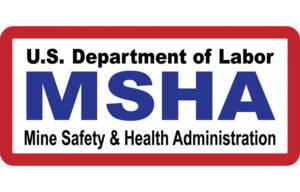 The U.S. Mine Safety and Health Administration (MSHA) has issued a final rule that limits exposure to respirable silica dust. It lowers the permissible exposure limit of respirable crystalline silica to 50 micrograms per cubic meter (mg/m3) of air for a full-shift exposure, calculated as an 8-hour time-weighted average. If a miner’s exposure exceeds the limit, the final rule requires mine operators to take immediate corrective actions to come into compliance.
The U.S. Mine Safety and Health Administration (MSHA) has issued a final rule that limits exposure to respirable silica dust. It lowers the permissible exposure limit of respirable crystalline silica to 50 micrograms per cubic meter (mg/m3) of air for a full-shift exposure, calculated as an 8-hour time-weighted average. If a miner’s exposure exceeds the limit, the final rule requires mine operators to take immediate corrective actions to come into compliance.
In addition to reducing exposure limits, the final rule requires mine operators to use engineering controls to prevent miners’ overexposure to silica dust and use dust samplings and environmental evaluations to monitor exposures. It compels metal and nonmetal mine operators to establish medical surveillance programs to provide periodic health examinations at no cost to miners. The exams are similar to the medical surveillance programs available to coal miners under existing standards. It replaces the existing standard for respiratory protection with a new standard reflecting the latest advances in respiratory protection and practices. The agency believes this update will better protect miners against airborne hazards, including silica dust, diesel particulate matter, asbestos, and other contaminants.
Inhalation of respirable crystalline silica, a carcinogen, can cause serious lung and other diseases, such as silicosis, lung cancer, progressive massive fibrosis, chronic bronchitis, and kidney disease. Exposure to mixed coal mine dust containing respirable crystalline silica can lead to the development of black lung disease and progressive massive fibrosis. These diseases are irreversible and can be fatal. They are also preventable.


